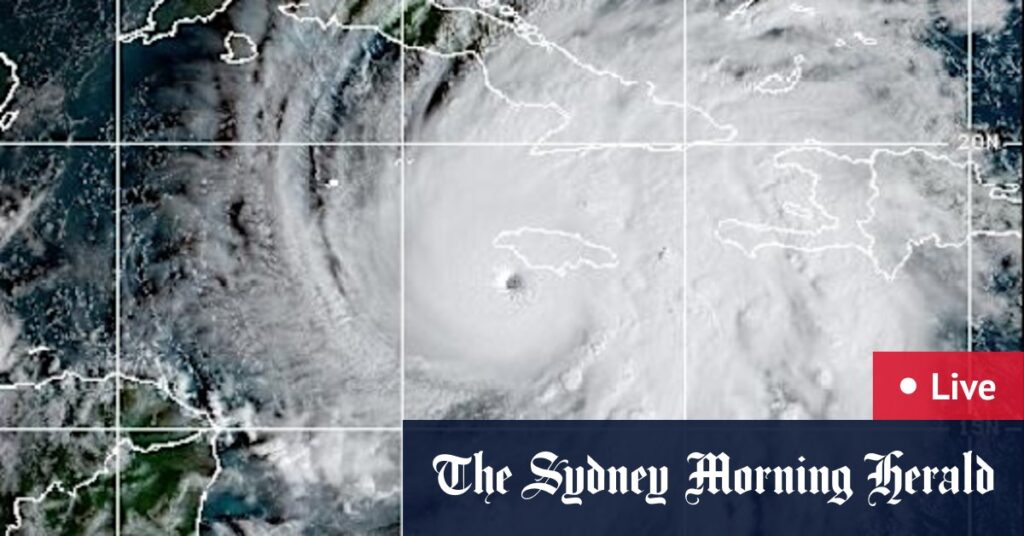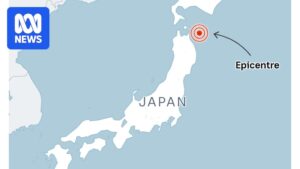
Hurricane Melissa, described as the “storm of the century” for Jamaica, made landfall near New Hope early Wednesday morning, unleashing catastrophic winds and rain. The storm, initially a Category 5 hurricane, was downgraded to a Category 4 but remains “extremely dangerous” as it moves toward Cuba, according to the US National Hurricane Center (NHC).
Melissa’s impact has been severe, with winds reaching 300 km/h, making it the strongest storm to hit Jamaica since records began 174 years ago. The hurricane has claimed seven lives so far: three in Jamaica, three in Haiti, and one in the Dominican Republic. Rescue operations are underway, but many roads are blocked by debris, leaving some families stranded.
Unprecedented Power and Impact
The NHC reports that Hurricane Melissa is more powerful than Hurricane Katrina, which devastated New Orleans two decades ago. Melissa’s sustained winds surpassed those of Katrina at its peak intensity. The storm’s trajectory across Jamaica has caused widespread destruction, with 240,000 residents without power and significant damage to infrastructure, including three hospitals.
Approximately 15,000 people are currently housed in emergency shelters across Jamaica. The hurricane’s path is expected to affect eastern Cuba next, with forecasts predicting heavy rainfall, flash flooding, and life-threatening storm surges.
Scientific Anomalies and Meteorological Insights
Experts are baffled by Hurricane Melissa’s development, which defied typical meteorological patterns. The storm underwent two rounds of “rapid intensification,” increasing its wind speeds dramatically. Normally, such intensification is followed by a weakening phase, but Melissa maintained its strength.
University of Miami hurricane researcher Brian McNoldy noted that the storm did not weaken despite sitting offshore from Jamaica’s mountainous terrain, which usually disrupts hurricanes. Climate Central’s chief meteorologist, Bernadette Woods Placky, highlighted the unusually warm water levels that sustained the storm’s intensity.
“It’s wild how almost easily this was allowed to just keep venting. This had enough warm water at such high levels and it just kept going,” said Bernadette Woods Placky.
Government Response and Public Safety Measures
Jamaican Prime Minister Andrew Holness has declared the country a “disaster area” to prevent price-gouging as citizens secure essential supplies. Local Government Minister Desmond McKenzie has urged residents to utilize emergency shelters, emphasizing the severity of the situation.
Environment Minister Matthew Samuda warned against complacency, stressing that this is not a typical hurricane. “Now is the time to be safe, to be smart,” he said.
Challenges in Evacuation and Misinformation
Misinformation has reportedly hindered evacuation efforts, with false information circulating on social media. Minister of Information Dana Morris Dixon expressed concerns over fake videos and misleading reports affecting public response. Despite these challenges, some communities, like Old Harbor, have seen increased shelter usage compared to previous storms.
“The country doesn’t need confusion at this time,” said Minister Desmond McKenzie.
International Aid and Future Preparations
International aid is being prepared for quick deployment. The United Nations and other organizations are ready to send essential supplies to Jamaica. The British government has also expressed readiness to provide support if requested.
Meanwhile, China has pre-positioned aid for Cuba, anticipating the hurricane’s impact. Jamaica’s main international airport is expected to reopen soon to accommodate relief flights, though uncertainty remains about other airports in the storm’s path.
Wildlife Threats and Public Warnings
Residents in parts of Jamaica have been warned about potential crocodile threats due to flooding. The South East Regional Health Authority advised caution as rising water levels could displace these animals into residential areas.
“Residents living near these areas are therefore advised to remain vigilant and avoid floodwaters,” the authority stated.
As Hurricane Melissa continues its path towards Cuba, the region braces for further impacts, with preparations underway to mitigate the storm’s devastating effects.






